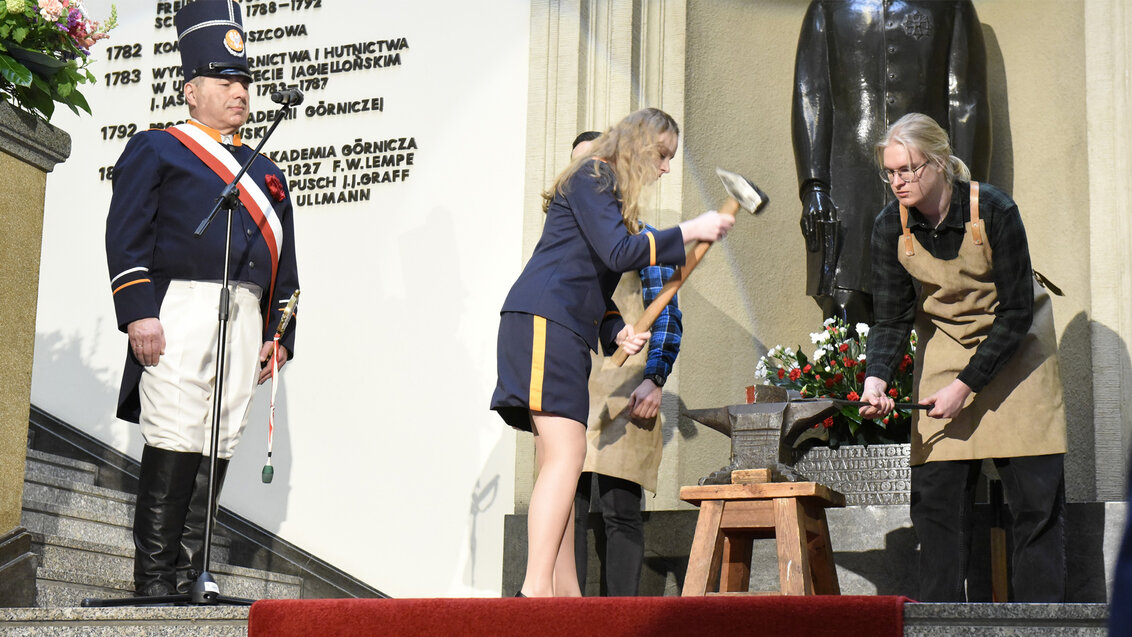
Symbolic metallurgy ceremony at the AGH University. Photograph: AGH University
Traditions related to the celebration of the Metallurgist’s Day, formal and informal education, metallurgy sociolect, musical culture, the cult of St. Florian, metallurgy uniforms and symbols are only some of the elements of the metallurgy tradition. By the decision of the Minister of Culture and National Heritage, they have been included on the National List of Intangible Cultural Heritage.
This honour is a result of months-worth of work, with efforts also on the part of the AGH University. The activity of the broadly defined group of depositors, i.e. institutions, entities, and individuals cultivating these traditions, were coordinated by the Metallurgical Museum in Chorzów. It is thanks to this cooperation that a catalogue of metallurgy traditions from five regions could be developed. It encompasses the following elements: traditions related to the celebration of Metallurgist’s Day (including ceremonial marches, masses for the intentions of the brotherhood, ceremonies honouring jubilations, march, feasts), formal and informal education, their sociolect, musical culture - including metallurgy orchestras or singing traditions, the spiritual sphere related to the cult of St. Florian, uniforms or symbols such as the flag or emblem.
They all constitute an important part in the legacy of the industrial revolution and it is difficult to understand the last 250 years of our history without them. For many years, in many parts of the country, metallurgy-related universities, trade unions, and plants have consistently made efforts to nurture the metallurgical tradition and protect it from oblivion, but despite this fact, the heritage of generations of metallurgists has long been scattered and remained in the shadows. Being included on the List in the company of over 90 of the most important traditions cultivated in Poland only confirms and highlights its contribution to the national cultural legacy.
“Today, together with depositaries, we may say in unison that our work was successful and Poland is proud of its traditions in metallurgy! However, the real challenge is still ahead of us. Each tradition on the List requires cultivating, cherishing, and keeping. They need their guardians. That is the role of all depositaries who are now obliged to implement a 5-year protection plan,” Adam Kowalski, director of the The Metallurgy Museum in Chorzów, implied.
 AGH University Alumni Day 2024
AGH University Alumni Day 2024  20 years of AGH University-SIT partnership and inauguration of Alumni Association in Tokio
20 years of AGH University-SIT partnership and inauguration of Alumni Association in Tokio  Projects by AGH University Main Library with funding from Scientific Social Responsibility programme
Projects by AGH University Main Library with funding from Scientific Social Responsibility programme  Honouring those we lost this year
Honouring those we lost this year  On energy transformation and more. Distributed Energy Congress
On energy transformation and more. Distributed Energy Congress  AGH University to establish AI Factory
AGH University to establish AI Factory 

